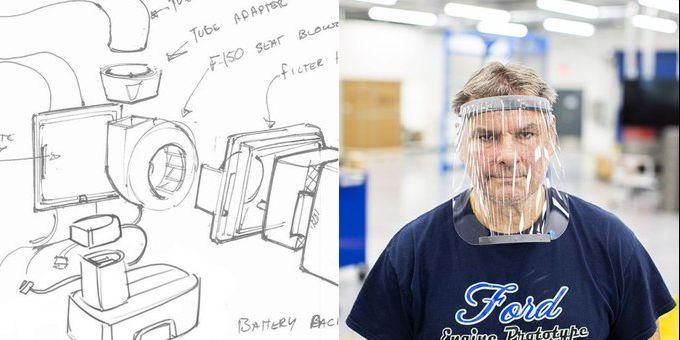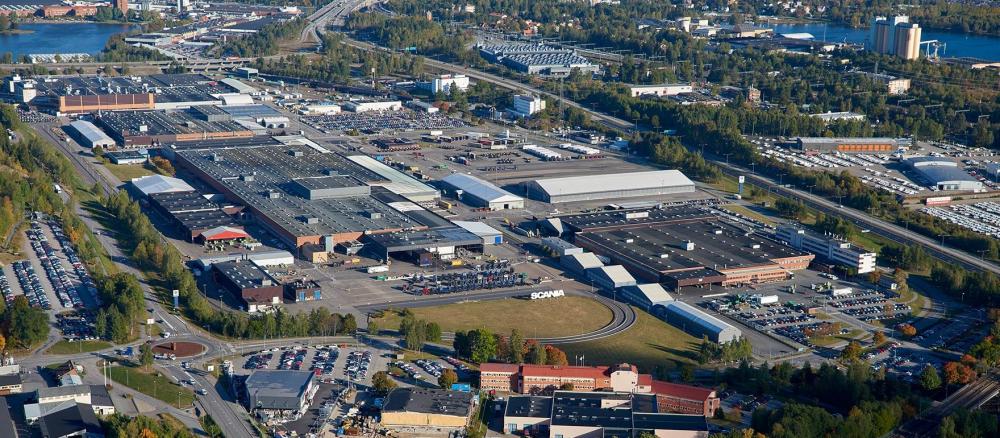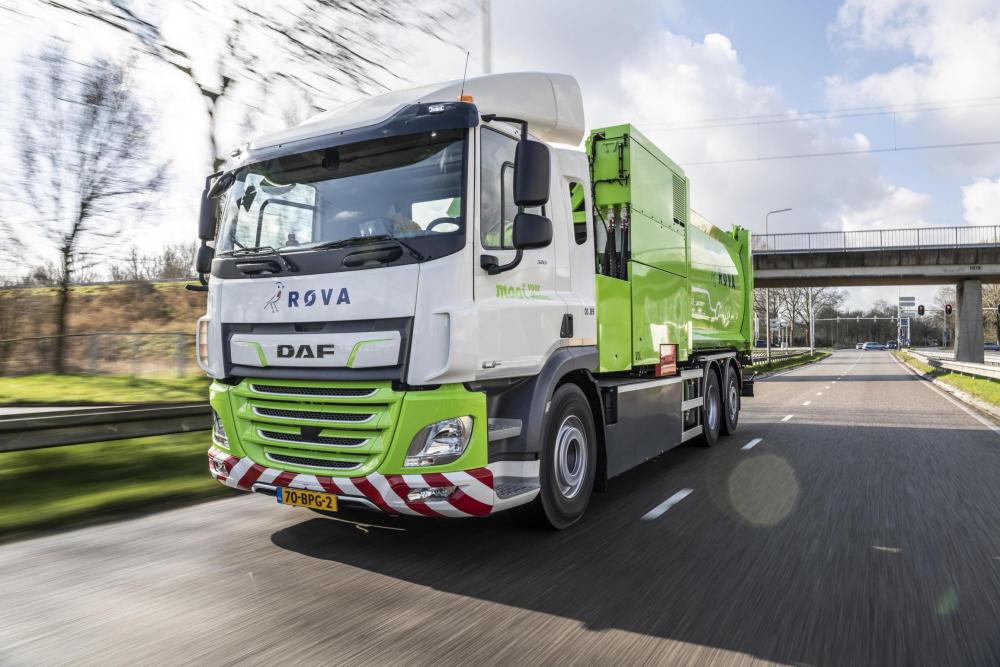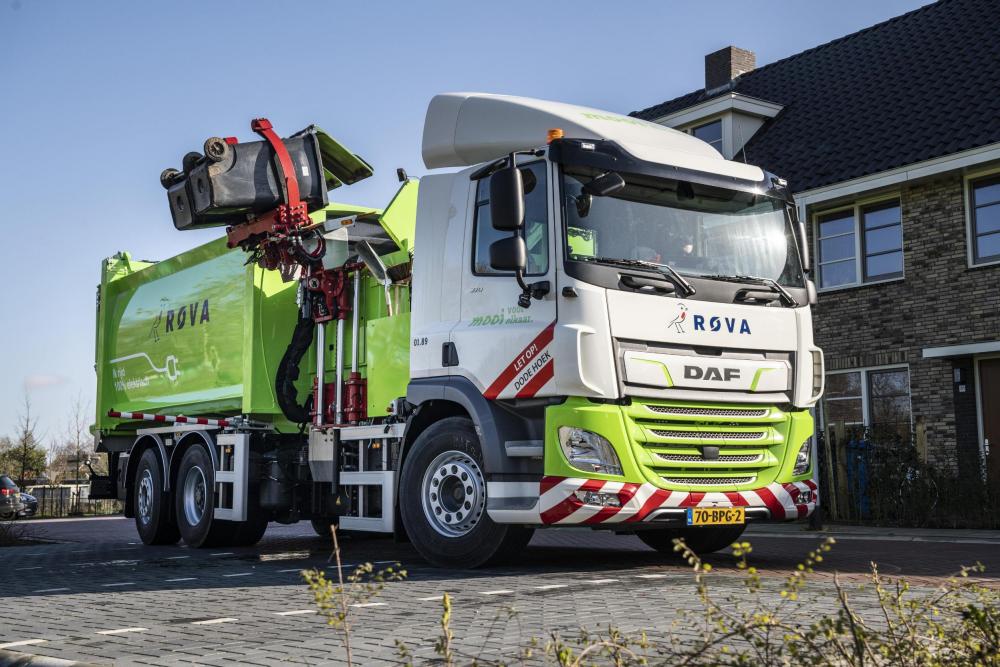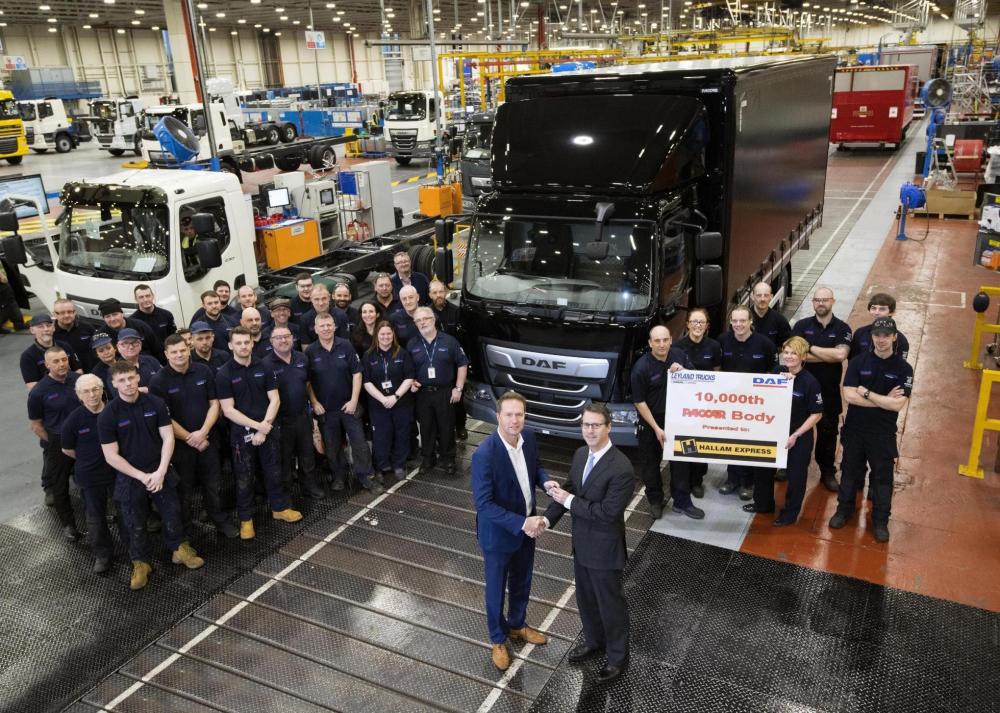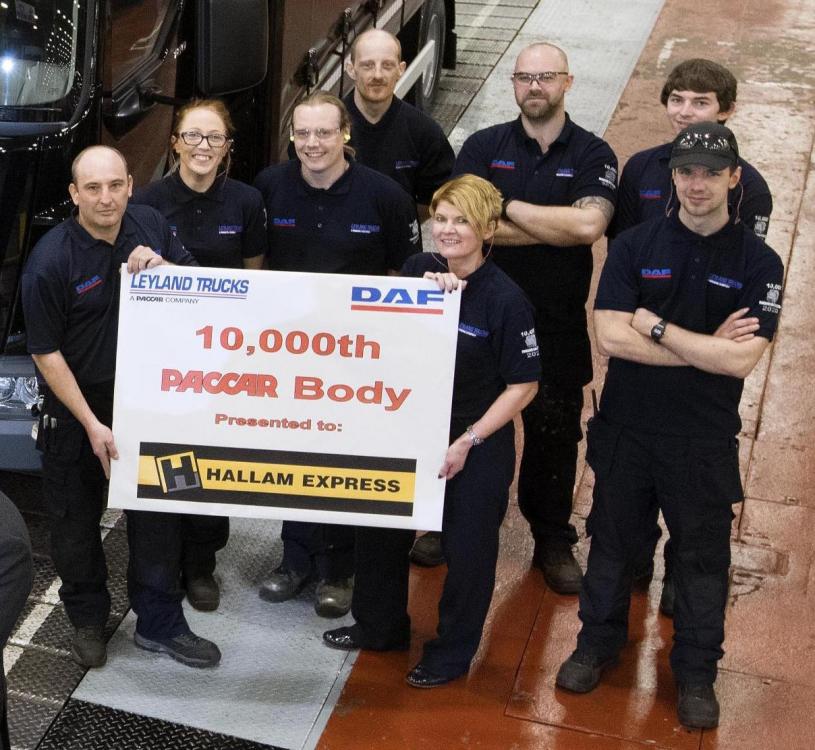
kscarbel2
Moderator-
Posts
18,884 -
Joined
-
Days Won
114
Content Type
Profiles
Forums
Gallery
Events
Blogs
BMT Wiki
Collections
Store
Everything posted by kscarbel2
-
Ford to keep North American plants shuttered beyond March 30 Michael Martinez, Automotive News / March 24, 2020 DETROIT — Ford Motor Co. on Tuesday said its North American manufacturing facilities will remain closed beyond March 30, the date it originally planned to restart production, as the coronavirus pandemic continues to spread. The automaker last week, following pressure from the UAW, agreed with General Motors and Fiat Chrysler Automobiles to shutter plants in the U.S., Mexico and Canada for more than a week until March 30. Since that decision, a number of U.S. states where Ford has plants, including Michigan, have issued orders for residents to stay at home unless they work in essential fields. The automaker did not offer a time frame for when its plants might reopen. Michigan and at least 15 other U.S. states, along with Ontario, Canada, have instituted stay-at-home orders. In Michigan, the order extends until April 13. "We are assessing various options and working with union leaders — including the United Auto Workers and Unifor — on the optimal timing for resuming vehicle production, keeping the well-being of our work force top of mind," Kumar Galhotra, Ford's president of North America, said in a statement. General Motors is standing by its plan to suspend production until at least March 30, spokesman David Barnas said. "Production status will be reevaluated week to week after that," he said. Fiat Chrysler Automobiles has not yet made a decision about whether the shutdown would need to be extended past the end of March. Ford CEO Jim Hackett, speaking Tuesday on the "CBS This Morning" show, said the automaker was focused on making sure its workers remain healthy. "What we're trying to do is get through this quarantine period where everyone has a job and then, on the other side, quickly rebuild demand," he said. "We're working really closely with the UAW and there's an agreement that when it's time to go back to work, everyone's going to go back to work." Hackett said he thinks the situation could last into early May. "We can see what happened in China, we see what happened in South Korea and I'm hopeful we get started before then," he said. "We're ready to go."
-
Eaton Cummins Introduces Endurant XD Heavy-Duty Transmission
kscarbel2 replied to kscarbel2's topic in Trucking News
Cummins to Offer 18-Speed Endurant Transmission as X15 Engine Option Heavy Duty Trucking (HDT) / March 24, 2020 Cummins will offer an 18-speed version of its Endurant automated transmission as an option or X15 diesel engines beginning next year. Cummins said it has developed what it called the “next-generation of integrated power” for high-horsepower applications – an Endurant XD 18-speed transmission option for its X15 Performance Series engines, beginning in 2021. The X15 Performance Series and Endurant XD powertrain is optimized for high gross combined weight on-highway and severe on and off highway applications such as dump and logging trucks, with full application coverage to be announced at a later date, according to Cummins. Available starting in 2021, the Cummins X15 and Endurant XD is currently going through extensive field tests and validation. “The newest integrated powertrain from Eaton Cummins Automated Transmissions Technologies delivers a versatile powertrain, gives professional operators tailored configurations that meet their needs, and allows the newest drivers to simply get in and go,” said J. Michael Taylor, general manager, global powertrain integration, Cummins. “The Eaton Cummins Automated Transmissions Technologies develops products with the proven process of deeply integrated customer councils, which provides key insights, input, and feedback.” The Endurant XD automated transmission features 18 forward speeds and up to six reverse speeds. A high-capacity bottom 8-bolt and rear power take-off provisions are offered as standard equipment, providing customers with flexibility for final equipment design and the ability to power necessary accessories. A transmission oil cooler provision is available when required. When combined with the X15 Performance Series, the toughest applications and duty cycles can now benefit from a truly integrated automated powertrain. With the strongest engine brake in the industry, the new 18-speed powertrain will reduce the amount of stress placed on service brakes. -
Ehingen, Germany. https://en.wikipedia.org/wiki/Ehingen https://www.liebherr.com/en/usa/about-liebherr/liebherr-worldwide/germany/ehingen/liebherr-in-ehingen.html .
-
MarketWatch / March 24, 2020 Gov. Andrew Cuomo issued a blistering assessment of Washington’s handling of the coronavirus pandemic Tuesday — with over 25,000 New Yorkers now ill, more than 200 dead and the sickness’s spread accelerating like a “bullet train.” “The president said it’s a war,” said a visibly angered Cuomo in a press briefing. “Well, then, act like it’s a war!” Cuomo’s anger boiled over as he spoke at Manhattan’s Javits Center, which is in the process of being converted to a 2,000-bed hospital complex to fight a flood of cases that now stands at 25,665 in the state — with 210 dead — and 14,904 in the city. The governor accused President Trump, Health and Human Services Secretary Alex Azar and the Federal Emergency Management Agency of largely leaving New York to fend for itself. “People say, politicians say. I look at actions, not words,” fumed Cuomo. “They’re doing the supplies? Here’s my question. Where are they?” At the top of Cuomo’s list of grievances was the mere 400 ventilators that FEMA has committed to sending the city — a fraction of the 30,000 that he says the state will require when the contagion hits with its full force. “You want a pat on the back for sending 400 ventilators?” asked Cuomo. “What are we going to do with 400 ventilators? “You pick the 26,000 people who are going to die,” said Cuomo — so incensed that he misstated the 29,600 New Yorkers who would actually be left without the life-saving equipment. Cuomo invoked his most dire terms yet with the worst of the plague bearing down with increasing speed, and now as little as two weeks away. “We’re not slowing it, and it is accelerating on its own,” said Cuomo, noting that number of cases in New York is now doubling every three days. “The [disease] forecaster said to me, ‘We were looking at a freight train coming across the country,’” Cuomo related. “‘We’re now looking at a bullet train.’” The rate has led experts to project an eventual peak demand of 140,000 hospital beds — up from the 110,000 that Cuomo had previously predicted. The state has only about 53,000 permanent hospital beds. The increased rate also led Cuomo to project that the worst could hit in as little as two weeks. “It accelerates the apex, to a point where it could be as close as 14 to 21 days,” he said. “The apex is higher than we thought, and the apex is sooner than we thought.” With the worst still ahead, Cuomo balked at Trump’s suggestion that America abandon social-distancing and restart its economy sooner rather than later. “This is unsustainable, that we close down the economy and we continue to spend money,” he acknowledged. “But if you ask the American people to choose between public health and the economy, then it’s no contest. “No American is going to say, ‘Accelerate the economy at the cost of human life.’ “What is this, some modern Darwinian theory of natural selection?” asked Cuomo. “If you can’t keep up, then you just fall be the wayside of life? God forbid.” . .
-
A transverse torque rod (1RY48P23 or equivalent 1RY351P11 - 2 different vendors of same) was not originally deemed necessary for on-road highway models with 38k suspensions. It simply isn't necessary, like it is for vocational. That said, we wrote a service bulletin outlining how to add a transverse torque rod if desired. It obviously will extend the life of the trunnion insulators. You need a 44RU11192 spacer plate behind the frame-mounted bracket with single frame trucks. Always apply 20 weight non-detergent motor oil, per the Mack service bulletin on the subject, when installing Mack trunnion insulators.
-
Reuters / March 24, 2020 DETROIT — General Motors and medical equipment maker Ventec are speeding up efforts under a partnership code-named "Project V" to build ventilators at a GM plant in Kokomo, Indiana, to help combat the coronavirus outbreak. GM said on Monday that work at its Indiana plant, which makes small electronic components for cars, is part of the effort to expand ventilator production. The GM-Ventec project is known internally as "Project V." As part of the effort to boost ventilator output from Ventec, of Bothell, Washington, GM has arranged for the supply of 95% of the parts needed to build the ventilator and is seeking to source the remaining 37 necessary parts. The goal of the venture is to build up to 200,000 ventilators. "Ventec Life Systems and General Motors have been working around the clock to implement plans to build more critical care ventilators," GM spokesman Dan Flores said on Monday. "With GM’s support, Ventec is now planning exponentially higher ventilator production as fast as possible. "As part of those efforts, GM is exploring the feasibility to build ventilators for Ventec at a GM facility in Kokomo, Indiana," he added. First parts need to be delivered by suppliers to GM by April 6. Supplier production could begin within the next 2-3 weeks. Creative Foam Corp in Fenton, Michigan, is one of the auto suppliers joining the effort. It already had a division serving the healthcare sector. Creative Foam will start making foam parts for the ventilators' air filtration system this week, CEO Phil Fioravante said. "We already have installed capacity, so we're just repurposing it and utilizing it for this end." In Minneapolis, auto supplier Twin City Die Castings Co, which had signed a contract to supply Ventec about nine months ago, quickly amped up its plans, CEO Todd Olson said. It makes aluminum and magnesium parts for the ventilator compressor and housing. Now Twin City is converting the parts it was making into die casts for higher-volume production as the volume target has gone from making parts for 150 ventilators a month to as many as 20,000. Such a conversion would normally have taken 12 weeks to complete, Olson said, but is being done in one week as employees work almost nonstop. In addition, Twin City and rivals are sharing intellectual property to speed the process. "Luckily, we had a nice jump on this," Olson said.
-
SVT NYHETR / March 23, 2020 Truck manufacturer Scania has sent production and logistics personnel to medical equipment company Getinge to help it rapidly increase its production of ventilators. "We need to help us," says Scania's CEO Henrik Henriksson. Scania on Monday halted production in Latin America. And on Wednesday, the truckmaker will suspend production of trucks and bises in Europe. "It's a completely new game plan," says CEO Henrik Henriksson. "We are well placed to handle this. But we have to help," he adds. "It's about Getinge needing to increase its production dramatically and then we want to help and we have good skills that are available when it comes to running logistics flows," Henriksson says. Scania's own production stoppage is currently scheduled to last at least three weeks, until Monday 13 April. "Then we have to make a decision week by week on how to handle this and at what pace we will produce," Henriksson says. According to the Scania boss, several factors determine when and to what extent production can be started up again. Firstly, staffing must be resolved. There are confirmed cases of coronavirus at the truck dealers in southern Europe. But in addition, there are a large number with suspected symptoms. "There are quite large losses and it is increasing every day," Henriksson says. "There were too many shortcomings. But in some parts of the organization, more than ten percent are at home, for self-care or to take care of children or relatives. Another important factor in being able to run production again is the availability of components and functional logistics. "The first disruption we received was with suppliers in China. We could handle that pretty well. Then it became more difficult when it continued with northern Italy: And when the supplier disruption included those in France and Germany, there were too many restrictions that forced us to suspend production.” The economic impact of the pandemic is a third factor that determines how Scania will design and time the restart of production and other activities that are now declining on the back burner, such as research and development. Here it is ultimately the order book that determines Scania's decision.
-
- 1
-

-
Bloomberg / March 24, 2020 Fiat Chrysler Automobiles (FCA) is using an auto plant in China to make a million face masks a month to donate to first responders and health-care providers in the U.S., CEO Mike Manley said in an email to employees. Conversion of the plant began Monday and Fiat expects to start production in the coming weeks. A spokeswoman said that making the masks at a China plant that is up and running is the fastest way to get much-needed supplies to health workers in the U.S. Manley also wrote that Fiat engineers and manufacturing teams and Ferrari employees in Italy are working with Siare Engineering, an Italian respirator company, to more than double their productivity.
-
MarketWatch / March 24, 2020 General Motors said Tuesday it is planning to draw down about $16 billion from its revolving credit facilities, as it works to boost cash during the coronavirus pandemic. The company said the funds will supplement the company's cash position of about $15 billion to $16 billion expected at the end of March. "We are aggressively pursuing austerity measures to preserve cash and are taking necessary steps in this changing and uncertain environment to manage our liquidity, ensure the ongoing viability of our operations and protect our customers and stakeholders," CEO Mary Barra said. "Over the past several years, we have made necessary, strategic decisions and structural changes that have transformed the company and strengthened the business, better positioning us for downturns." GM Financial had $24 billion of liquidity at the end of 2019 and expects to end the first quarter with similar levels, said the statement. That should be sufficient to support at least six months of cash needs, including new originations, without access to capital markets. GM said it is withdrawing its guidance for 2020.
-
-
Ford partnering with GE, 3M to build ventilators, respirators, face shields Michael Martinez, Automotive News / March 22, 2020 DETROIT -- Ford Motor Co. plans to build respirators, ventilators and face shields in partnership with its UAW work force, manufacturing company 3M and GE Healthcare to aid medical workers as the coronavirus pandemic threatens to overwhelm their supply. The automaker on Tuesday said it will use fans from F-150 pickup seats, portable tool battery packs and 3D-printed parts to quickly assemble disposable air purifying respirators alongside 3M at its advanced manufacturing center near Detroit in Redford, Michigan. Ford's Powered Air-Purifying Respirator (PAPR) has a clear mask that fits over the face. Air is drawn in through a tube connected to a pump that filters the air. The PAPR will be made using parts from both Ford and 3M, including fans used in the Ford F-150's optional ventilated seats. Ford said it is exploring the possibility of producing the device at one of its Michigan factories. 3M will also make the respirators at its own factory. Ford said its partnerships were code-named “Project Apollo” after the Apollo 13 launch in 1970 when a lunar landing was aborted after an oxygen tank failed two days into the mission, forcing the astronauts to improvise a fix. "Working with 3M and GE, we have empowered our teams of engineers and designers to be scrappy and creative to quickly help scale up production of this vital equipment," Ford CEO Jim Hackett said. Ford said it initially would be able to make up to 1,000 respirators per month, helping 3M boost production of the respirators tenfold. In addition, Ford plans to produce up to 100,000 face shields per week, also in Michigan. Roughly 75,000 of these shields are expected to be finished this week, and more than 100,000 face shields per week will be produced at Ford subsidiary Troy Design and Manufacturing's facilities in Plymouth, Michigan. Ford also is partnering with GE Healthcare to expand production of a simplified version of GE's ventilator design. Ford said the ventilators could be produced at a Ford manufacturing site in addition to a GE location. "This is such a critical time for America and the world," says Executive Chairman Bill Ford. "It is a time for action and cooperation. "By coming together across multiple industries, we can make a real difference for people in need and for those on the front lines of this crisis. At Ford, we feel a deep obligation to step up and contribute in times of need, just as we always have through the 117-year history of our company." Ford joins General Motors and Tesla, which have also announced plans to build medical equipment in the U.S. Ford also is working on another initiative in the United Kingdom with a number of companies in Europe to produce additional ventilators, it said Tuesday. .
-
Liebherr Press Release / March 18, 2020 In fact, it is the most powerful 4-axle crane on the market. The boom is the longest in this crane class and has extremely high lifting capacities when fully raised. This increases flexibility and saves transport costs, as this crane can tackle jobs which would normally require a 5-axle crane together with all the logistics work that involves. For example, the crane is ideal for erecting radio masts or tower cranes and also features time-tested technology in the form of VarioBase® and VarioBallast®. .
-
Volvo Trucks Press Release / March 20, 2020 At EG Erikssons Åkeri, transport is a family business. For 65 years, mines and construction sites around Skellefteå, northeastern Sweden, have relied on three generations of Erikssons for their concrete deliveries. As one of Volvo Trucks’ selected field-test customers, the Swedish haulage company gets the job done with a welcome addition to their fleet – the new Volvo FMX. “The new Volvo FMX is a long-awaited model that will make a big difference, not least when it comes to the drivers’ work environment,” says Joakim Eriksson, co-owner at EG Erikssons Åkeri. .
-
Scania Group Press Release / March 16, 2020 Scania plans to stop operations at most of its European production units on Wednesday next week (25 March) due to component shortages and the major disruptions that have occurred in the supplier and logistics chain as a result of the spread of COVID-19 in Europe. “To ensure our customers’ vitally important transports for society, our service workshops and parts centres will continue their operations,” says Scania’s President and CEO Henrik Henriksson. At present, Scania expects to resume production within two weeks. Scania staff directly affected by the planned production shutdown are employees at the group’s plants in Sweden, the Netherlands and France. Scania is in close dialogue with the union representatives in order to jointly address the situation. “The management and employee representatives both highly appreciate the state support measures that are now being made available in the countries where our staff now temporarily will lack work,” says Henriksson. Scania’s industrial operations in Latin America, which account for about one-fifth of the company’s production volume, will still continue as planned. .
-
DAF Trucks Press Release / March 16, 2020 As part of a field test comprising four comparable vehicles, the first DAF CF Electric 6x2 refuse collection truck has entered operations with Dutch public waste disposal firm ROVA. The vehicle features a zero-emission VDL electric powertrain alongside a fully electric VDL refuse collection superstructure. The vehicle will be operated by ROVA in the Dutch city of Zwolle. Since the end of 2018, DAF CF Electric 4x2 tractor vehicles have been in operation for inner city distribution at leading Dutch and German transport companies and supermarket chains. While DAF has commenced limited sales of its CF Electric tractor in The Netherlands, Belgium and Germany, four fully electric 6x2 chassis are now entering a field test for refuse collection applications. The 3-axle vehicles provide high payload (GVW up to 28-tonnes) and – thanks to a steered trailing axle – excellent manoeuvrability; a huge advantage for waste collection vehicles operating in dense urban areas. Regular routes The VDL E-power driveline fitted to the DAF CF Electric 6x2 waste collection truck provides 210 kW of power and a torque of 2,000 Nm – like the CF Electric tractor. The driveline is powered by a battery pack with a (gross) energy content of 170 kWh; sufficient for covering regular garbage collection routes. Waste collection trucks typically return to the depot every few hours to unload, at which time a DAF CF Electric can recharge up to 80% battery capacity in only 30 minutes. “As good as a conventional truck” For ROVA, ease of use of the DAF CF Electric refuse collection truck is key, states Marco van Lente, General Director. “The DAF CF Electric is just as good and easy to operate as any conventionally powered truck and we truly believe it is important to participate from the start in the energy transition as natural resources are becoming increasingly rare. It is in our DNA to take care of the future of our planet and the use of low emission vehicles is part of our sustainability plan.” .
-
DAF Trucks Press Release / March 5, 2020 Leyland Trucks has produced its 10,000th ex-factory ‘PACCAR body’ built on a dedicated production line at its UK production plant – a significant milestone for the in-house bodywork program which includes the design, manufacture and installation of premium box, Aerobody and curtainsider bodies. The PACCAR body programme – a unique offering among truck manufacturers – is available on 4x2 rigid chassis across DAF LF and CF model series. Leading customers like Royal Mail have taken advantage of the factory bodywork programme since its introduction in 2007. The ex-factory programme includes box, Aerobody and curtainsider variants, with a myriad of options for length, height and width, tail-lifts and lighting, and much more, incorporating customer specific requirements that can extend to full vehicle finish including complete vehicle painting and livery application. UK-operator Hallam Express in Sheffield is the recipient of the 10,000th vehicle – a 12.0-tonne DAF LF 180 curtain sider. “We were very pleased with the ability to spec and acquire a complete bodied vehicle through our DAF dealer,” said David Simpson, Hallam Express’ Managing Director, “The ex-factory body solution ensures excellent quality and reduces lead-time substantially. It is a genuine one-stop-shop service.” The PACCAR body programme – a unique offering among truck manufacturers – is available on 4x2 rigid chassis across DAF LF and CF model series. Leading customers like Royal Mail have taken advantage of the factory bodywork programme since its introduction in 2007. The ex-factory programme includes box, Aerobody and curtainsider variants, with a myriad of options for length, height and width, tail-lifts and lighting, and much more, incorporating customer specific requirements that can extend to full vehicle finish including complete vehicle painting and livery application. UK-operator Hallam Express in Sheffield is the recipient of the 10,000th vehicle – a 12.0-tonne DAF LF 180 curtain sider. “We were very pleased with the ability to spec and acquire a complete bodied vehicle through our DAF dealer,” said David Simpson, Hallam Express’ Managing Director, “The ex-factory body solution ensures excellent quality and reduces lead-time substantially. It is a genuine one-stop-shop service.” .
-
Springfield News-Sun / March 2, 2020 Navistar will be building 162 trucks at its facility in Springfield for the United States Postal Service after more than 500 of those trucks from a previous order were built in Mexico. “Every truck matters to us even if it’s just one truck order. That is work for our members,” said Chris Blizard, the president of UAW Local 402. His union represents production workers and those with skilled trades at the Springfield plant. Approximately 150 of those trucks are a result of a new order from the postal service that is expected to enter production in May. The remaining 12 are leftover units from a previous order of 1,579 that were slated to be built in Springfield last year, Blizard said. However, production for at least 590 of the trucks from the previous order were shifted to Navistar’s plant in Escobedo, Mexico after a nationwide strike at General Motor’s last fall caused a part shortage at the Springfield plant. Navistar also builds trucks and vans for GM at its Springfield plant. Navistar’s Springfield operation temporarily ceased production as a result of the strike that started in September and lasted six weeks. However, postal service trucks were still being built in Mexico after the strike had ended and the Springfield plant had resumed a normal production schedule, Blizard said. The News-Sun previously reported that only 590 of those units slated for the postal service would be made in Mexico to ensure that Navistar could meet the postal service’s delivery deadline. Employees with the Navistar plant reached out to the office of U.S. Senator Sherrod Brown (D) due to concerns that those trucks were no longer being built in the area and that Springfield workers had sent decals for the Mexican facility to affix to the trucks. Brown said in a letter addressed to Navistar’s CEO Troy Clarke earlier this year that discussions with employees at the Springfield plant revealed that they believed “approximately half of the USPS tractor truck order has been assembled in Springfield; 30 percent has already been assembled in Mexico; and the remaining 20 percent is scheduled to be produced in Mexico.” The letter also mentioned that the postal service told Brown’s office that its contract with Navistar was for 1,579 tractor trucks and that “the balance before and after will be satisfied as planned from the Ohio facility.” Brown stated in his letter that after talking to both Navistar and USPS, it seemed that the former “could have returned production of the USPS trucks to Springfield after the GM strike but chose not to,” Brown said. Blizard told the News-Sun that it is unclear how many of those trucks were built in Mexico since Navistar has not released that information to him. However, he said a few of those units have been built in Springfield since the end of the strike. It is unclear if Navistar’s recent decision to have 162 postal service trucks assembled in Springfield is related to Brown’s letter. Representatives of Navistar did not respond to a request for comment from the News-Sun regarding the new order. In a letter sent to UAW Local 402 members earlier this week, Blizard thanked Brown and his staff for meeting with him over the past several months to discuss “USPS trucks being built in Mexico with US tax dollars.”
-
Navistar Defense named to $11.4 million Army deal
kscarbel2 replied to kscarbel2's topic in Trucking News
Iraq to receive 4x4 and 6x6 vehicles from Navistar Defense Shephard News / March 20, 2020 Navistar Defense has been awarded an $11.44 million FMS contract to supply Iraqi forces with an unspecified number of 4x4 and 6x6 transport trucks and recovery vehicles. Spare parts for these vehicles will also be included. Five bids were made for the FMS contract. According to the US DoD, the vehicles should be delivered by 28 February 2021. They will be assembled at locations in Ohio and Tennessee with the US Army Contracting Command ensuring the fulfillment of the contract requirements. -
Dayton Business Journal / March 23, 2020 One of the Dayton region's largest manufacturers is part of a lucrative contract with the U.S. Army. Work will be handled locally. Navistar Defense, a Melrose Park, Illinois-based company that is a subsidiary of Navistar International Corp., won an $11.4 million deal for general transport trucks, recovery vehicles and spare parts. Work will be performed at the company's Springfield facility, as well as a location in Ooltewah, Tennessee. The foreign military sales deal will support the government of Iraq, according to the U.S. Department of Defense. Work is expected to be complete by Feb. 21, 2021. Navistar beat out four other companies for the contract, which was delivered by the U.S. Army Contracting Command in Michigan. The contract is significant as it will bring in a substantial amount of new work for the company's Springfield operation. It also helps strengthen Navistar's relationship with the military, and may lead to future deals. Navistar is the fourth-largest manufacturing company in the Dayton region. It has more than 2,100 local employees and 2.1 million square feet of manufacturing space, where it produces medium, heavy-duty and severe service trucks. Navistar also is one of the Dayton area's 20 largest employers.
-
DefPost / March 22, 2020 Saudi Arabia’s ERAF Industries and Navistar Defense, LLC announced the signing of a Memorandum of Understand (MoU) between the two companies. This important step demonstrates Navistar Defense’s commitment to the Kingdom of Saudi Arabia’s Vision 2030. ERAF Industries brings the necessary and required local manufacturing capabilities, technology and services to the Saudi Arabia defense industrial base. “The MoU contains a framework for cooperation satisfying obligations under the Kingdom’s Vision 2030 economic plan,” said ERAF Chairman, President & Chief Executive Officer Abdullah Alameel. “It establishes a mutually beneficial cooperation between the two companies to jointly approach the opportunities in the Kingdom by utilizing their synergy in strong technical, logistical, industrial capabilities and effective collaborative effort.” “Navistar Defense has a proud history of delivering and sustaining tactical mobility and logistical support vehicles for the U.S. military and its allies,” said Navistar Defense Chief Executive Officer Ted Wright. “The United States and the Kingdom of Saudi Arabia have a strong relationship established 75 years ago and we look forward to enabling the Royal Saudi military by addressing their vehicle requirements. Cooperation between Navistar Defense and ERAF is an important step in growing our presence in the Middle East, especially in Saudi Arabia and in supporting the Kingdom’s Vision 2030 plan.”
-
Crane Carrier Introduces Narrow Tilt Cab Truck Chassis
kscarbel2 replied to kscarbel2's topic in Trucking News
-
Commercial Carrier Journal (CCJ) / March 23, 2020 Paccar has issued a recall that affects approximately 35,671 Peterbilt tractors from model year 2015-2020 equipped with a left-hand under hood jumper terminal, according to National Highway Traffic Safety Administration documents. Affected trucks include Peterbilt 365, 389, 567 and 579 models. In the affected trucks, the positive battery jumper terminal cable may be too long, allowing it to chafe against the left front suspension spring and result in an electrical short circuit, which increases the risk of the fire. Paccar will notify owners of affected trucks, and dealers will inspect the battery jumper terminal cables and replace them as necessary. Owners can contact Paccar customer service at 1-940-591-4220 with recall number 20PBA. NHTSA’s recall number is 20V-130. The company also issued a separate recall for approximately 233 model year 2016-2020 Peterbilt 320 and 520 models with dual foot valves and a liftable tag or tri-drive rear axles. The rear brake signal hose in these trucks may be missing a quick release valve, possibly causing a delay in their brake release timing. Paccar will notify owners, and dealers will check the trucks for a quick release valve, installing one if necessary. Owners can contact Paccar customer service at 1-940-591-4220 with recall number 20PBB. NHTSA’s recall number is 20V-132.
BigMackTrucks.com
BigMackTrucks.com is a support forum for antique, classic and modern Mack Trucks! The forum is owned and maintained by Watt's Truck Center, Inc. an independent, full service Mack dealer. The forums are not affiliated with Mack Trucks, Inc.
Our Vendors and Advertisers
Thank you for your support!


